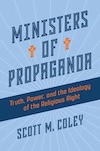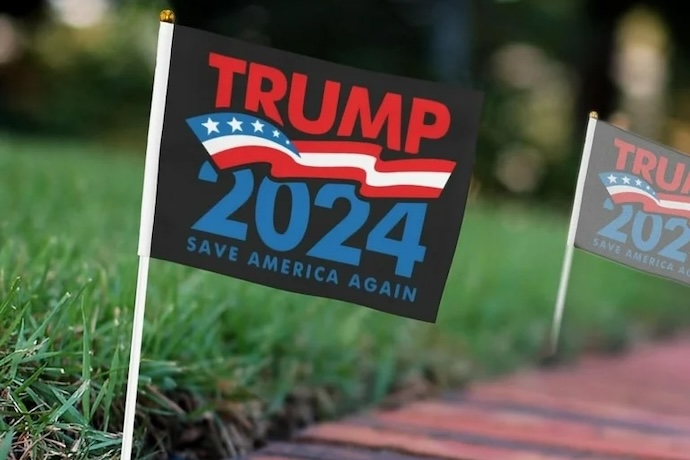In response to the election, a significant number of people on social media and elsewhere have expressed some form of this sentiment: a lot of voters are going to get what they asked for and learn some hard lessons about their own interests. While one can always hope, recent history shows that these lessons are likely to go unlearned. In fact, not only are these lessons unlikely to be learned, but without significant interventions, the myopathy of many middle- and working-class voters is only likely to grow more pronounced as we descend into what I call the fascist death spiral of right wing populism.
Here’s how it works. Conservative politicians in the US perform a delicate balancing act favoring tax policies that benefit a few voters at the top of the economic scale, and opposing social programs that benefit the vast majority of voters in the middle- and working-class. Of course, in order to implement those policies conservatives must win elections. Political scientist Daniel Ziblatt calls this the “conservative dilemma”: how do conservatives recruit enough popular support to win elections while enacting policies that undermine the interests of most voters?
A primitive strategy for overcoming the conservative dilemma is to recruit middle- and working-class allies who are willing to vote against their own interests in exchange for policies that appease conservative cultural grievances—primarily around race, gender, sexuality, and immigration. A more refined version of this strategy is to persuade middle- and working-class voters that their economic interests are, in fact, served by policies that appease conservative cultural grievances.

Portions of this article are excerpted from Ministers of Propaganda: Truth, Power, and the Ideology of the Religious Right by Scott M. Coley ©2024 (Wm. B. Eerdmans Publishing Co.). Reprinted by permission of the publisher.
Regarded by many as a gifted storyteller, Reagan used narratives to breathe life into racist tropes. One such narrative, loosely based on a real-life case, featured a Cadillac-driving “welfare queen” from Chicago, who had “80 names, 13 addresses, [and] 12 social security cards,” whose tax-free income exceeded $500,000 in 2024 dollars. Another of Reagan’s favorite punchlines involved the fanciful notion that food stamps might enable “some young fellow [to cut in line] ahead of you to buy a T-bone steak” while “you were waiting in line to buy hamburger.”
When Reagan first introduced the line about the T-bone steak, the food stamp recipient cutting in line was “some strapping young buck,” (“buck” being a racial epithet connoting defiance of White authority and the threat of violence.) After some focus-grouping, the Reagan campaign decided that this was too on the nose, and the phrasing was revised. But the message was clear enough: the gravest economic threat to honest, hardworking (White) Americans came not from corporations seeking to profit at all costs, or financial speculators, or tax-dodging one-percenters, but from (Black) welfare cheats.
Conservative evangelicals who’d spent the preceding three decades resisting federal civil rights enforcement by appeal to White supremacist theology were all too eager to believe that the reason they couldn’t get ahead financially was that the federal government kept transferring the nation’s wealth to Black welfare recipients.
Over the course of eight years in the White House, Reagan’s administration managed to cut the top marginal tax rate by more than half, from 70 percent to 28 percent, and redefine the terms of economic debate for decades to come. Between 1980 and 2016, the share of national income flowing to the richest 1 percent of American households roughly doubled—from 11 percent in 1980 to 20 percent in 2016.
During that same span, the share of national income flowing to the bottom half of households was cut in half—from about 20 percent in 1980 to 10 percent in 2016. So in 1980, the wealthiest 1 percent of American households had half the income of the bottom 50 percent; by 2016, the wealthiest 1 percent had double the income of the bottom 50 percent.
By embedding his argument for fiscal conservatism within coded appeals to racial resentment, Reagan effectively dissolved the conservative dilemma. No longer did conservative politicians need to weigh winning elections against serving the interests of economic elites. The moment Reagan convinced middle- and working-class White voters that their economic interests were served by slashing government programs, the path to winning elections merged with the path to advancing the interests of economic elites at the expense of middle- and working-class voters. The two had become one.
This most recent election left a lot of idealistic progressives mystified by the fact that the Trump campaign spent hundreds of millions of dollars airing anti-trans television ads across the country in the closing weeks of the campaign. (The source of the mystery being how anyone could imagine that so many Americans hate trans people so much that this kind of messaging would be effective.) One such ad focuses on the prospect of gender-affirming care for undocumented immigrants who are incarcerated, funded by the American taxpayer. The ads finish with a voiceover claiming that “Kamala is for they/them. President Trump is for you.”
The subtext, if we may call it that, is an economic message. The reason you can’t afford groceries, or childcare, or housing, is that progressives like Harris are taking all your money and spending it on socialized medicine for transient LGBTQ criminals from the Global South. But Trump will fight for you by keeping they/them in their place—never mind that his only real policy achievement in his first term was a massive tax cut for the wealthiest Americans, and never mind that every single Republican in the U.S. Senate voted to end the expanded child tax credit in December 2021. And if the outcome of the election is any indication, a majority of Americans actually buy this propaganda.
This is the fascist death spiral of right-wing populism—a disaffected, economically insecure electorate that will not spend the next four years learning just how much none of their problems are caused by feminism, immigration, or civil rights. They didn’t arrive at this opinion through a careful consideration of evidence, they don’t hold this opinion because of evidence, and the evidence of the next four years isn’t going to change their minds.
As downward mobility accelerates, traditionally (or aspirationally) privileged groups will take refuge in the politics of “law and order,” which promises to secure their privilege at the expense of disfavored groups. But because disfavored groups aren’t the actual cause of anyone’s economic problems, these economic problems will only deepen. A downwardly mobile electorate will heap yet more blame and punishment on disfavored groups, while the wealthiest people in our society rob us all blind.
Portions of this article are excerpted from Ministers of Propaganda: Truth, Power, and the Ideology of the Religious Right by Scott M. Coley ©2024 (Wm. B. Eerdmans Publishing Co.). Reprinted by permission of the publisher.


